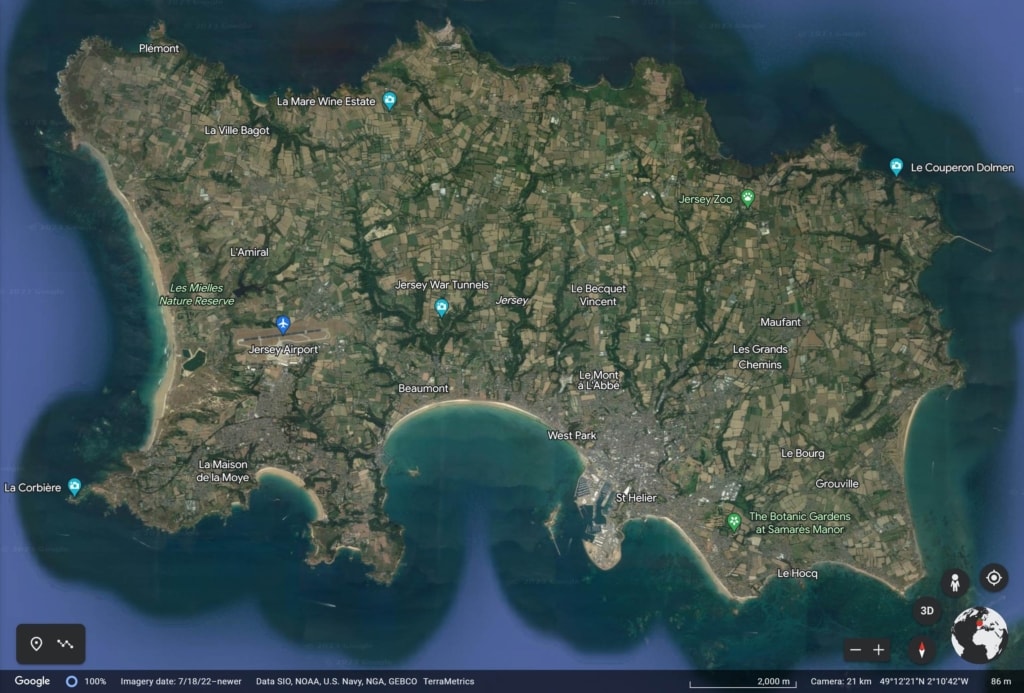Jersey Facts
- Jersey sits in the Bay of St Malo, 14 miles (22 kilometres) from the French coast and 85 miles (137 kilometres) south of the English coast. Jersey is the biggest of the Channel Islands.
- Jersey is only 5 miles (8 kilometres) long and 9 miles (14.5 kilometres) wide. The coastline is 48 miles (77 kilometres) long.
- The 2021 census showed a population of 103,100 people.
Jersey is made for those who love to be outdoors, especially walking, cycling, and watersports. But any outside activity really.
We advise you to plan your visit to Jersey and your outings according to the tide times, don’t underestimate how important the tide is. Jersey has a huge tidal range, more than 40 feet (12 metres) at it’s peak, so the size of the beaches and the colourful rocks (viewed from cliff paths, etc) tend to be most impressive during low tides (some beaches disappear entirely at high tide!), whereas the sea and the waves tend to impress most at high tide. The surface area of the island nearly doubles on the biggest tides.
The sun doesn’t always set in the same place. There is a 72 degree variance in sunset position between the shortest and longest days of the year. So you can even see sunset over the sea from some North Coast beaches in summer, and from some South Coast beaches in winter.
The island looks complety different in different seasons. For example, in winter the cliff paths are every shade of brown and the waves can be wild and the sea can look a very dark and solid shade of greyish teal, whereas in summer it’s lush green everywhere, purple foxgloves and the sea can be translucent blue. Jan-Mar brings daffodils in the hedgerows, Apr/Oct (varies) brings large areas of yellow gorse, Jul-Aug brings large areas of purple heather.
You can drive around the island in a few hours and not really see it, or walk it for 50 years and still see sights you haven’t seen before.
Check out the photos here: Jersey Photos (All)
The exportation of cattle from the Island commenced in the 18th century and with an estimated worldwide population in excess of 2 million head, the ‘Jersey’ is now the second most numerous breed of dairy cow. Source- RJA&HS – Wikipedia
In the 16th and 17th century, large numbers of men, women and children were employed knitting woollen stockings which were in such demand that they were exported in their thousands every week, mainly to Continental Europe. So much was this the case that the word “jersey” actually came to mean “knitting”. Later, it was a navy blue sweater called a ‘jersey’, made to a certain pattern, specifically for fishermen. Which is why we still have a jersey, being an article of clothing today. Source- Jerripedia – Knitting
Jersey is where the state of New Jersey in the USA gets it’s name from. Source- Jerripedia – New Jersey
Jersey history dates back to prehistory, and it’s fascinating. Source- Jersey – Wikipedia
Location Map
— Click ‘View larger map’ to explore the map in a new tab —
Flag


